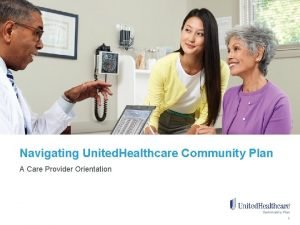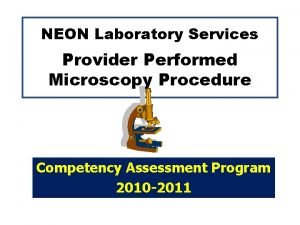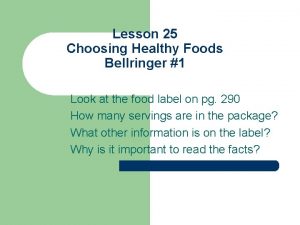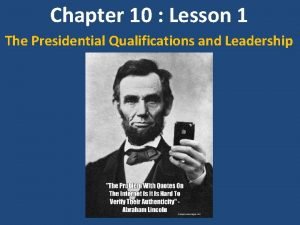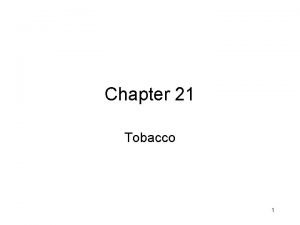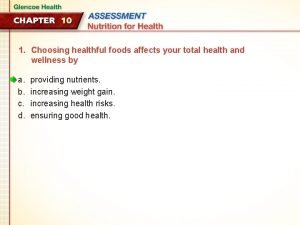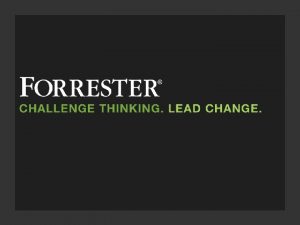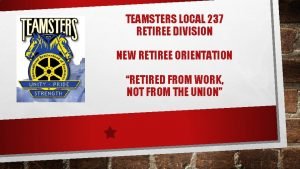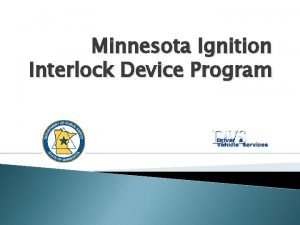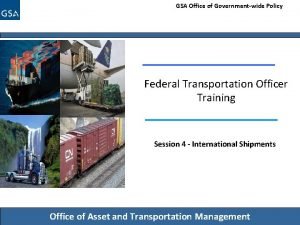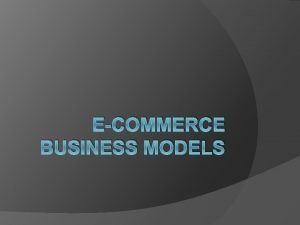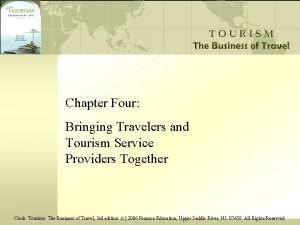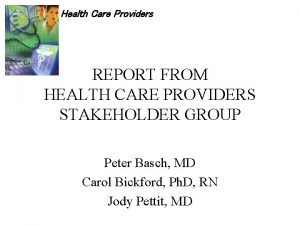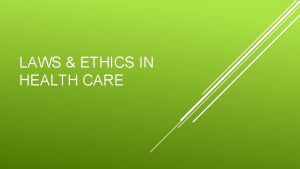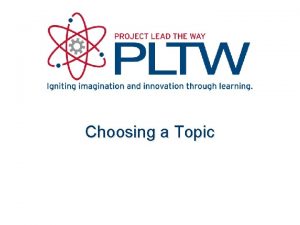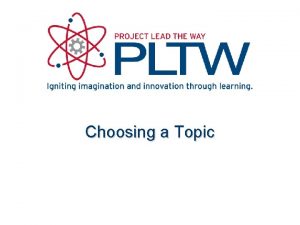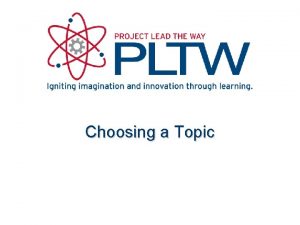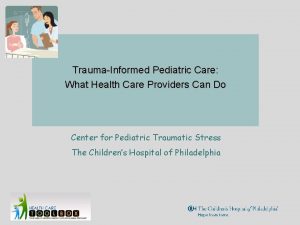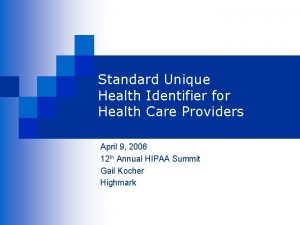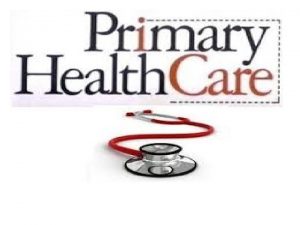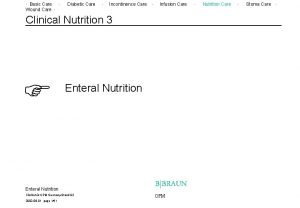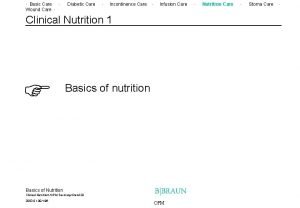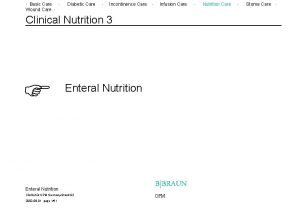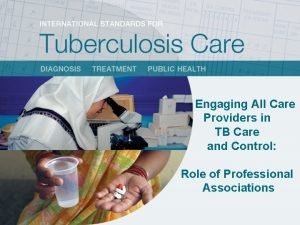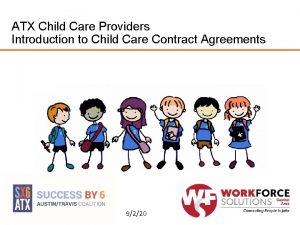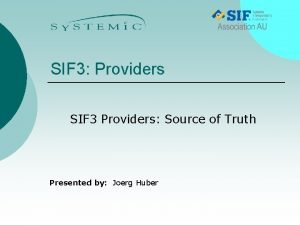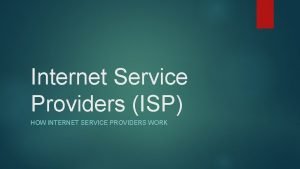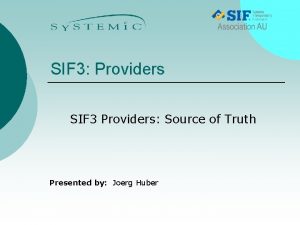Health Care Lesson 1 Choosing Providers Choosing Providers






















- Slides: 22

Health Care Lesson 1: Choosing Providers

Choosing Providers People have the right and responsibility to choose their own health care providers based on there individual needs. This choice extends to health care professionals, hospitals, and pharmacies.

Choosing Health Care Professionals Credentials General vs specialized care Get-acquainted appointment Location Office hours Participation in the person’s health insurance plan Personal manner Referral from a family member, friend, health care professional, or hotline Solo practitioner vs part of a group practice Treatment and preventative therapies offered

Choosing Hospitals Accreditation Affiliation with the patient’s physicians General vs specialized care Location Participation in the patient’s health insurance plan Visitation policies Private versus non-profit Referral from a family member, friend, or health care professional Size Tour of the facility Services offered

Choosing Pharmacies Medications carried Delivery available Drive-through available Hours Independent versus franchise Knowledgeable and friendly pharmacists Location Participation in the patient’s health insurance plan Traditional versus mail order pharmacy

Types of Medications A prescription medication is one that people can buy only with written authorization from a physician or dentist to a pharmacist. An over-the-counter medication is one that people can buy without a prescription. Prescription and over-thecounter medications are either brand name or generic.

Health Care Lesson 2: Physical Examination

Reasons for Physical Examinations During a physical examination, a physician evaluates a patient’s current physical condition. The purpose of routine physical exams is to diagnose and treat health problems, update immunizations, order health screenings, assess the risk of future health problems, encourage healthy living, and maintain a relationship with the physician.

Physical Examination Before a physical examination, the reason for the patient’s visit, the patient’s medical history, and the patient’s current medications are recorded. At the beginning of an exam: ▫ Measure the patient’s height and weight and, possibly, body mass index ▫ Take the patient’s temperature ▫ Take the patient’s blood pressure ▫ Take the patient’s radial pulse and respiration

Physical Examination Procedures Not all physical examinations are alike. The procedures that are performed depend upon the reason for the patient’s visit and the physician’s practices.

Testing Far Vision A Snellen chart is commonly used to test far vision. 20/20 vision: ▫ The top 20 represents the distance the patient is from the chart (20 feet). ▫ The bottom 20 represents the height of the letters the patient can read at that distance (20 millimeters). Defects in far vision are known as nearsightedness. https: //www. youtube. com /watch? v=Cxm 3 Wt 1 qn. BU

Testing Near Vision A Jaeger chart is commonly used to test near vision. Holding the chart about 14 inches away from the eyes, a person with normal near vision should be able to read the smallest text. Defects in near vision are known as farsightedness.

Stress and Planning for Wellness Lesson 1: Stress

Stress Stress is the tension that results when a person is faced with change. A stressor is something that causes stress. A stressor can be external or internal.

Helpful versus Harmful Stress can be harmful or helpful. Harmful stress results in problems, but helpful stress leads to positive actions, such as protection and achievement. The way a person responds to a stressor determines whether the stress is harmful or helpful.

Fight of Flight Fight or flight is the physical response to a stressor. Note the steps in the chart. When a person is stressed, the body releases the hormone adrenaline. Adrenaline causes the person to have more energy and to become more alert. At this point, the person’s body is prepared for either aggression, known as fight, or escape, known as flight.

Defense Mechanisms Defense mechanisms can help people cope with stress. Examples: ▫ ▫ ▫ ▫ ▫ Rationalization Projection Displacement Compensation Daydreaming Repression Suppression Denial Withdrawal

Stress-Reducing Techniques Think positively. Set realistic goals. Accept what cannot be changed. Plan ahead. Negotiate with others. Say “no. ” Talk with another person. Ask for and accept help. Spend time doing a hobby. Take deep breaths. Meditate or pray. Eat well. Exercise regularly. Get enough sleep. ◦ For notes list a few (ones that you might not have known about)

Stress-Resolution Plan People can manage particularly difficult stress by using a stress -resolution plan, also known as the problem solving method. For notes summarize the chart in the picture.

Outside Help Sometimes people require outside help to manage stress. Outside help includes professionals licensed in medicine, social work, counseling, or psychology. Outside help may also include clergy, counseling centers, support groups, and help-lines.

Stress and Planning for Wellness Lesson 2: Wellness Plan

Wellness Plan People are responsible for their own wellness. Healthy living depends on: ▫ Basic needs ▫ Effective stress management ▫ Access to health care ▫ Safety ▫ Avoiding harmful substances ▫ Protection from bloodborne pathogens To help achieve total good health, a person can create a wellness plan.
 United healthcare community plan
United healthcare community plan Ohio home care waiver independent providers
Ohio home care waiver independent providers Microscopic procedures for primary care providers
Microscopic procedures for primary care providers Primary care secondary care tertiary care
Primary care secondary care tertiary care Husky behavioral health providers
Husky behavioral health providers Health and social care unit 2
Health and social care unit 2 Health and social component 3
Health and social component 3 Choosing healthful foods lesson 25
Choosing healthful foods lesson 25 Guided reading activity choosing the president lesson 1
Guided reading activity choosing the president lesson 1 Chapter 21 lesson 2 choosing to live alcohol free
Chapter 21 lesson 2 choosing to live alcohol free Chapter 20 lesson 1 the health risks of tobacco use
Chapter 20 lesson 1 the health risks of tobacco use Your body uses carbohydrates by breaking them down into *
Your body uses carbohydrates by breaking them down into * Chapter 1 lesson 1 your total health lesson 1 quiz answers
Chapter 1 lesson 1 your total health lesson 1 quiz answers Forrester wave loyalty program service providers
Forrester wave loyalty program service providers Workplace based learning programme agreement template
Workplace based learning programme agreement template Local 237 retiree division
Local 237 retiree division Acca learning providers
Acca learning providers Adit exams
Adit exams Mn ignition interlock reduced fee application
Mn ignition interlock reduced fee application Masshealth dental providers portal
Masshealth dental providers portal Transportation terminology
Transportation terminology Transaction broker business model
Transaction broker business model Tourism service providers
Tourism service providers
